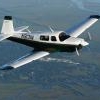KFC 150 Pitch Trim Servo Limits
-
Members Online
- Ibra
- hammdo
- Stubby
- Sherifferic
- Aviationist
- Niko182
- Yetti
- RoundTwo
- dzeleski
- toto
- richardbrochu27
- Bolter
- TCC
- M20F-1968
- daytonabch04
- Speed Merchant
- salty
- Mark89114
- ericrynehess
- Rmnpilot
- 802flyer
- Aerodon
- eman1200
- WilliamR
- Vermonter
- kortopates
- Shadrach
- gevertex
- Jason_Cincy
- N177MC
- Laura Storke
- Jcmtl
- Ragsf15e
- redbaron1982
- AIREMATT
- Andy95W
- Ethan
- MatthiasArnold
- DCarlton
- oregon87
- acekng1
- AH-1 Cobra Pilot
- Planegary
- BlueDun
- HRM
- 47U


Recommended Posts
Join the conversation
You can post now and register later. If you have an account, sign in now to post with your account.